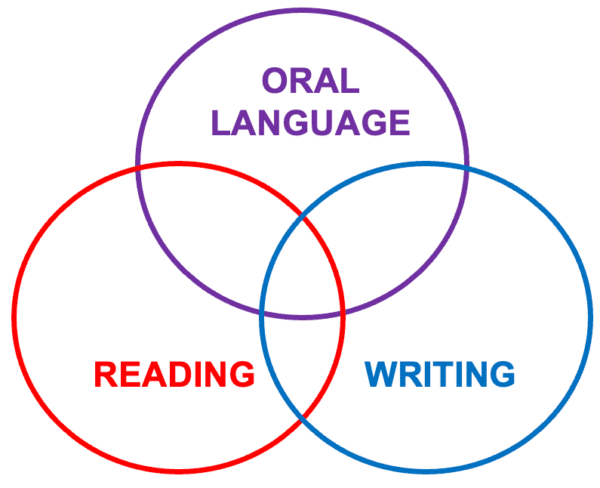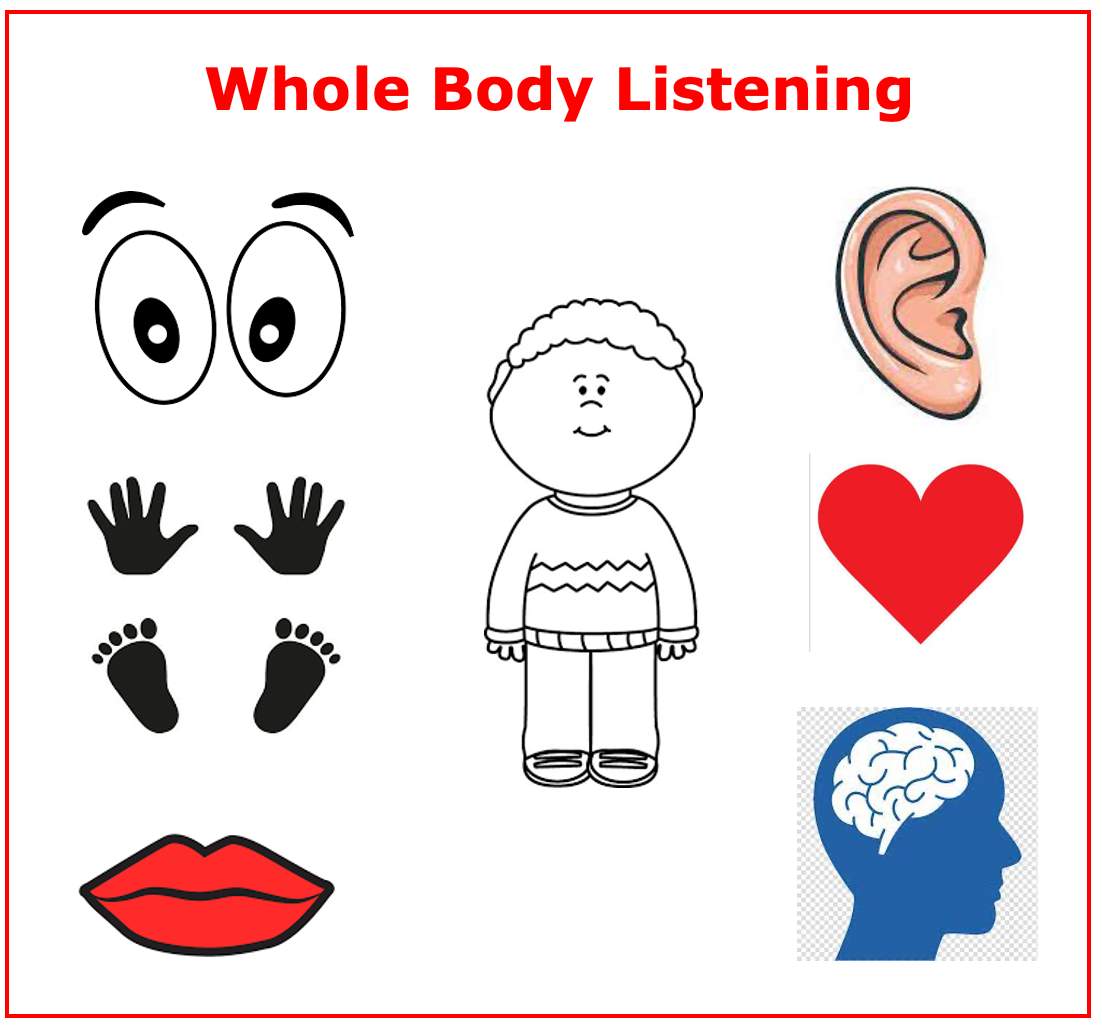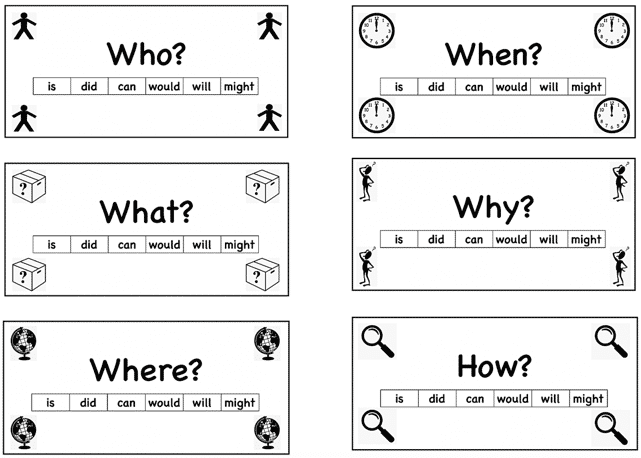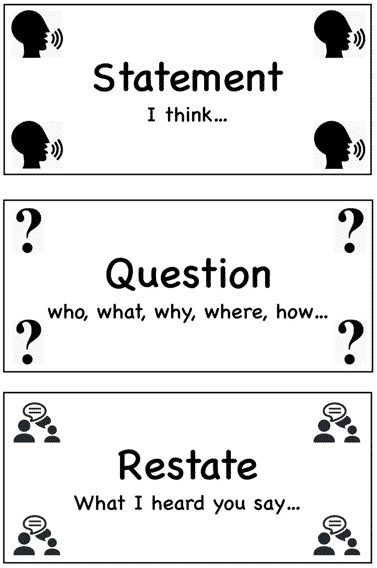Oral Language: The Foundation for Reading and Writing

“Reading and writing float on a sea of talk.”
What is your reaction to this quote attributed to James Britton (1970)?
Language skills and literacy achievement are highly correlated; research consistently demonstrates that the more children know about spoken language, the better equipped they are to succeed in reading and writing (Burns et al., 1999, Mehta et al., 2005, Pennington et al., 2019). The language children are exposed to at home and in school influences the development of their language comprehension, which in turn influences their fluency, vocabulary development and comprehension of written and media texts.
The development of oral language skills through instruction combined with frequent exposure to rich oral language opportunities throughout the school day lays the foundation for learning to read and write. Effective literacy instruction must include teaching that fosters oral language development, especially for students who enter kindergarten with weak spoken skills and English language learners (Calderon, 2011).
What do we know about language? Dr. Pamela Snow notes the following (2024):
- From birth to age 5, children learn that language consists of sounds (the first thing that babies can produce to communicate), words and word parts, phrases and sentences, and connected talk (discourse) in conversations, stories, and explanations.
- Language uses symbols to represent meaning. Those symbols can be spoken words, written words, pictographs, or sign language.
- Language is conceptual – it allows us to describe phenomena that are not physically present.
- Language is rule governed (e.g., regarding word order, how to form plurals, etc.) and these rules are implicit (learned and expressed in an indirect way) for native speakers of a language.
- Oral language is everyday talking (expressive) and listening (receptive/comprehension) skills and the mental representations that sit behind them.
- Mental representations that are shared through oral and written language include thoughts, ideas, memories, opinions, beliefs, wishes, needs, and instruction.
How teachers talk with young students is important! As models of academic language for young students, it is essential that teachers speak with precision and in complete sentences that follow the rules of English grammar. Teachers must be conscious of their own language in the classroom, being careful not to over simplify the way they speak by purposely using basic vocabulary and simple sentences. Likewise, teachers should encourage students to use precise and extended language.
Receptive and Expressive Language
Receptive language (listening) is focused on input of oral language that we hear and then process in our brain. Young students who do not have well-developed receptive language may have difficulty with understanding questions, following directions, and understanding what is read aloud or what others say. Expressive language is focused on the output of oral language. Young students who do not have well-developed expressive language may have difficulty developing vocabulary, combining words to make sentences, and expressing their needs and wants. Several instructional suggestions for developing receptive and expressive language that are from the Oral Language module of the Keys to Beginning Reading professional development course are provided below.
Receptive Language: Teaching Listening Skills
Students benefit from explicit instruction, modeling, and role-playing for how to:
- make eye contact when listening
- be aware of non-verbal cues provided by the speaker
- take turns and avoid interrupting
- ask questions
An anchor chart in the classroom such as the one below can serve as a reminder to students to focus on whole body listening!

The Listening Ladder (Eisenhart, 2008)
This procedure can be used to highlight what a good listener does. Consider making a classroom poster that looks like the example below. Can you think of some visuals you might add to each step in this list as a scaffold for young children who are not able to read the words?

Expressive Language: Developing Discussion Skills
Many children, especially in the primary grades, face challenges as they learn how to express themselves and communicate with others in the classroom. The teacher plays an important role in helping students learn to share their ideas with partners, in small group discussion, or during whole class instruction. The goal for developing expressive language in these early grades is for students to speak in complete sentences using academic vocabulary, and be able to stay focused on the topic they are discussing. In the upper elementary grades, the goal is for students to use longer, more complex and elaborated sentences, use even more academic vocabulary, and sustain a discussion with multiple back and forth responses.
Using W Questions to Support Discussion
View the examples below of “W” cards that can be used as prompts to help students ask questions during discussions with peers and with adults. Notice that the words is, did, can, would, will, and might are added to help students generate a question. Large cards such as these for a classroom pocket chart can be used to prompt classroom discussions, or teachers can make smaller card sets to give to pairs or small groups of students. See the related blog post Teaching with “W” Questions for additional instructional suggestions.

Elaborated Discussion: Peer Conversation Cards
Students need to learn that a conversation requires a meaningful exchange between two people – both must follow the rules of turn-taking, listening, and responding. An activity using a set of three peer discussion cards can be used to teach and practice peer conversation skills. The cards include the words Statement, Question, and Restate as shown below. If you are working with younger students who are not able to read the words, you can replace the words with visual symbols that represent the words. Activity directions are provided below the graphic.

- Print out sets of the 3 discussion cards on card stock. Ask students to work in groups of 3 and give each group a set of cards. For the first round, each student will take one of the cards.
- The teacher gives students a topic for the discussion (e.g., a character from a recent read aloud, an interesting picture to react to, a topic such as a favorite movie or game).
- The first student begins by holding up the Statement card and makes a statement related to the topic.
- The next student holds up the Question card and poses a question based on the first student’s statement. If students need a scaffold, ask them to consider the who, what, where, when, why, how words for ideas about what to say.
- The last student holds up the Restate card and restates in his or her own words what the first or second students said.
- The students switch cards and continue the process. The second- and third-round discussions can be about the original topic, or the teacher can provide a new topic for each round.
References
- Britton, J. (1970). Language and learning. Coral Gables, FL: University of Miami Press.
- Burns, M., Griffin, P., Snow, C. (Eds) (1999). Starting Out Right: A Guide to Promoting Children’s Reading Success. National Academy Press. Retrieved from http://www.nap.edu/download/6014
- Calderon, M. (2011). Teaching reading and comprehension to English learners, K-5. Bloomington, IN: Solution Tree Press.
- Eisenhart, C. (2008). An introduction to oral language development: The foundation for literacy. PowerPoint presentation delivered at the Rhode Island Reading First Conference.
- Mehta, P.D., Foorman, B.R., Martin, L., & Taylor, W.P. (2005). Literacy as a unidimensional multilevel construct: Validation sources of influence and implications in a longitudinal study in grades 1 to 4. Scientific Studies of Reading, 9 (2), 85-116.
- Pennington, Bruce, F., McGrath, Lauren M. and Peterson, Robin L. (2019). Diagnosing Learning Disorders: From Science to Practice 3rd Edition. New York: The Guilford Press.
- Snow, P.C. (2024). Oral language competence is necessary but not sufficient for reading success. PowerPoint presentation. Plain Talk About Literacy & Learning Conference, The Center for Literacy & Learning.

 Joan Sedita is the founder of Keys to Literacy and author of the Keys to Literacy professional development programs. She is an experienced educator, nationally recognized speaker and teacher trainer. She has worked for over 35 years in the literacy education field and has presented to thousands of teachers and related professionals at schools, colleges, clinics, and professional conferences.
Joan Sedita is the founder of Keys to Literacy and author of the Keys to Literacy professional development programs. She is an experienced educator, nationally recognized speaker and teacher trainer. She has worked for over 35 years in the literacy education field and has presented to thousands of teachers and related professionals at schools, colleges, clinics, and professional conferences.
Very useful information!!
Thank you